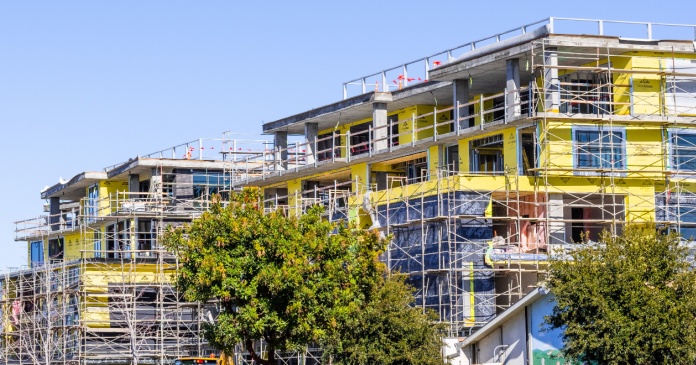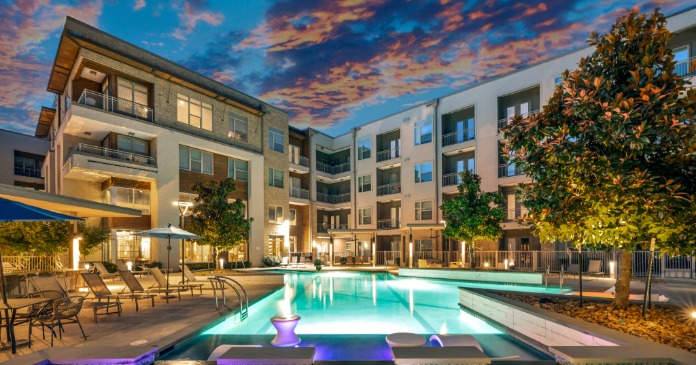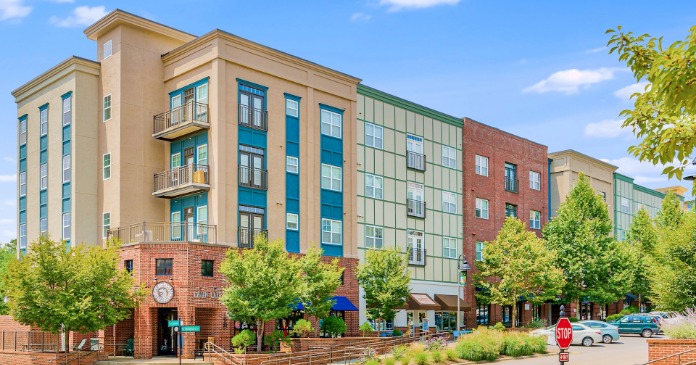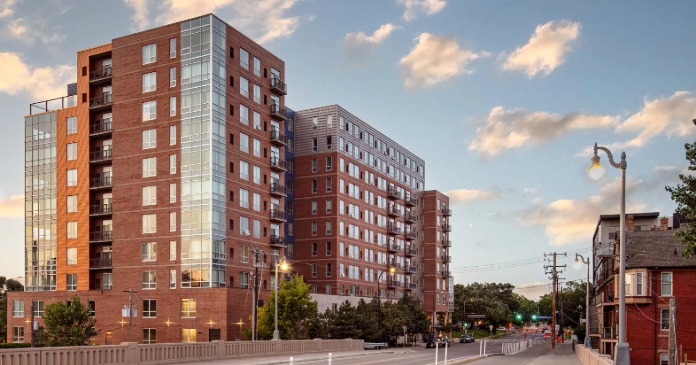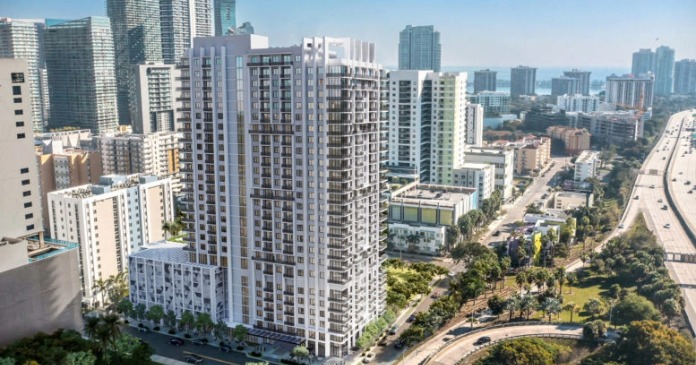That statement launched Cisneros’ presentation during a symposium in San Antonio in December 2004, sponsored by Freddie Mac Corporation, that focused on the growth of the Latino community in this country that is fueled by immigrants from Mexico, Puerto Rico, Cuba, El Salvador, Chile, the Dominican Republic and other Spanish-speaking countries, during which the idea for Casa Y Comunidad: Latino Home and Neighborhood Design was born.
Co-edited by Cisneros, who served four terms as mayor of San Antonio in the 1980s and was Secretary of the Department of Housing and Urban Development (HUD) in the 1990s and now is in the business of building workforce housing, and John Rosales, a former newspaper reporter for the San Antonio Light, who also worked at HUD in the 1990s as a special assistant to the Secretary in the office of the Executive Secretariat, the book provides a recipe for success in catering to the tastes of this growing segment of the population.
Census experts project the United States population will grow by 36 percent over the next 40 years to 410 million from 300 million today, with a 63 percent rise in the Latino population over those four decades, and that demographic earthquake coincides with the emergence of a substantial Latino middle class. Today the Latino population in this country is 40 million strong, representing 14 percent of the total population.
“In the 1970s, there were 6.5 million Latinos in the U.S. This represented about three percent of the nation’s 203 million total population. By 2010, it is estimated there will be nearly 44 million Latinos in the U. S. and by 2050, they will make up 25 percent of the U.S. workforce,” predicts Richard Eribes, PhD, a professor of architecture and former dean of the college of architecture and landscape architecture at the University of Arizona in Tucson, in the how-to book published in 2006 by BuilderBooks, the National Association of Home Builders’ (NAHB) book publishing division.
“If we look to the year 2025, we can expect the largest Latino populations will be found in California, Texas, Florida, New York, Illinois, Arizona, New Jersey, New Mexico and Colorado, in that order. The U.S. Census projects that these nine states will have a collective population of slightly over 49 million Latinos in the next 20 years,” Eribes wrote in the book that takes the first-ever look at the state of Latino home-ownership.
“Builders may also recognize that the Latino market for rental units, particularly apartments, is strong and growing,” said Cisneros in the introductory chapter he wrote for Casa Y Comunidad. “In many gateway cities, the combination of recent immigrant arrivals, the high cost of housing and the unavoidable time lags involved with saving money and establishing credit dictate that many Latinos rent their housing for a considerable period. As the Latino population continues to expand, there will be a huge demand for decent family-sized, affordable apartments,” he said.
“Over the next decade, approximately half of the rapidly growing Latino population will continue to rent. These families, singles and elderly will constitute a huge portion of the rental market in America and represent an enormous opportunity for developers who attempt to address their housing needs,” wrote Hipolito Roldan, CEO of Hispanic Housing Development Corporation in Chicago, who has developed more than 1,900 affordable apartments and townhouses in 22 developments for families and elderly residents of several Hispanic communities in Chicago, in the book’s chapter on multifamily and the Latino demographic.
While the book that won a silver medallion last summer in the 2007 Benjamin Franklin Awards sponsored by the Publishers Marketing Association, which recognize excellence in editorial and design, focuses mainly on preparing the housing industry to better understand Latino home-buyers, one chapter is dedicated to multifamily and much of the information intended for the home builder can be applied to multifamily development, as well.
If one were to have planned a literary tour of the Latino dream apartment or condo community 10 or 20 years ago, the choices would have been limited mostly to Texas and California, which still have the lion’s share of Latino families, according to Cisneros. “But, important new trends have emerged since the 1990s,” he said, explaining that the most growth in absolute numbers over the last decades has occurred in the country’s primary gateway cities like New York, Los Angeles-Long Beach, Miami and Chicago, according to the U.S. Department of Justice, Immigration and Naturalization Service’s annual report in late 1999.
California has the largest number of Latinos of any state, making up more than 32 percent of the Golden State’s approximately 36 million residents, or about 11.6 million. And Los Angeles is home to one in five Latinos of Mexican origin in the nation, who account for 67 percent of the more than 35 million Latinos in the U.S, according to Jongho Lee, PhD and assistant professor in the department of political science at Western Illinois University in Macomb, Ill., and Harry P. Pachon, PhD and professor in the school of policy, planning and development and president of the Thomas Rivera Policy Institute at the University of Southern California in Los Angeles, who co-wrote another of the chapters. And Texas has the second largest population of Latinos in the nation, 90 percent of whom are of Mexican heritage.
Today, Comunidad de Ensueno (Spanish for Dream Community), a community created according to the suggestions contained in Casa Y Comunidad‘s 210 pages, could be located just about anywhere on the East and West Coasts or in the Sunbelt. But, wherever it is, Comunidad de Ensueno is an urban, mixed-use, walk-able collection of mostly garden-style residential and commercial uses close to public transportation and embellished with plenty of park-like gathering places to satisfy the Latino love of social interaction. Opportunities for live-work spaces for cottage businesses and interconnected streets and sidewalks also are important elements in a community designed to entice Latinos, suggest chapter co-authors Thomas Gallas of Torti Gallas and Partners and Roberto Moranchel, senior urban designer for the Virginia Department of Community Planning, Housing and Urban Development of Arlington County.
The dominant exterior building material at Comunidad de Ensueno is brick, which is a symbol of strength and durability for many Latinos, especially first-generation immigrants, Jorge Velasco, president and CEO of Texas-based Qualitas Homes and a native of Mexico, explains in the chapter he wrote. “In the U.S., builders who offer only brick have an advantage over those who provide a combination of brick and other materials. A combination of materials is perceived by Latinos as inferior and less durable. Even though offering all-brick walls will cost more, the cultural identification with the materials is critical to the success of selling the product,” he cautioned.
The dwelling itself takes into consideration the two fundamental dynamics of the Latino family detailed by Cisneros, the first being that Latino families are generally larger than the average American family. “The average American household has about 2.6 people, whereas the average Latino household has more than 3.5 members,” he said, adding that fewer than eight percent of non-Hispanic white American families live in a household of five or more people, compared to almost 24 percent of Latino families. And those families are considerably younger, with a median age of 25.6 years, while the median age of the rest of the U.S. population is 35.3 years. So, this ideal dwelling would have three or four bedrooms, with one of those on the first floor with its own bath to accommodate an elderly family member, who also is a traditional part of the Latino primordial extended family structure, most of the books’ authors agree.
Those who included kitchen design in their chapters all concur that la cocina is the heart of the Latino home. The dream kitchen in the unit we are touring features wood cabinets, which are preferred over laminate surfaces, and is open to the other living areas on the first floor to permit the cook to interact with the rest of the family. “In Latino cultures, much social interaction revolves around food,” Velasco said, adding that the emphasis on the preparation and sharing of meals makes the family room less important for Latinos than the kitchen and dining room. The family room is mostly for watching TV or as a children’s playroom, so a clear line of sight is important for parents working in the kitchen to keep track of the kids. Some builders are eliminating the family room altogether, in favor of adding space to the kitchen and dining areas.
“Although parts of the kitchen may extend into social space, other kitchen functions may need to be shielded from view by their placement among kitchen accessories,” Cisneros observed. “For example, some traditional Latino homemakers prefer washing dishes by hand instead of using automatic dishwashers, so dishes may remain in the sink until someone is free to wash them.” At Comunidad de Ensueno, the deep double sink is positioned so that it is not prominently visible from the social space and the unsightly appearance of dishes waiting to be washed is hidden from view.
Because many foods in Latino recipes, like tortillas, are best prepared over an open flame, the stove is powered by gas, which is preferred by the Hispanic cook over all-electric kitchen appliances, and there are plenty of cabinets in which to store the dozens of utensils, pots and pans and specialized cookware that many Hispanic recipes require.
The rooms feature arches, niches, and cathedral ceilings along with windows that let in a lot of light, with hard-surfaced floors of ceramic or tile to make for easier cleaning, which the authors agree are important elements for attracting the rapidly growing Latino demographic.
“Latinos are not a niche market, but at the core of the entire housing market for many years to come,” wrote Nicholas P. Retsinas, director of Harvard University’s Joint Center for Housing Studies, in his introduction to the book. “The impact of this market will shape our homes and our communities for the 21st century,” he predicted, recommending that developers, builders, lenders and real estate professionals all would do well to heed the suggestions of the book’s authors.












